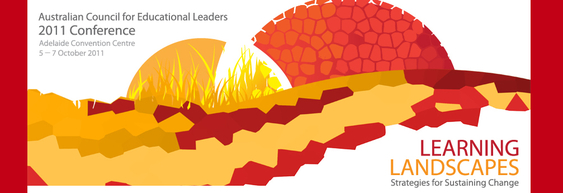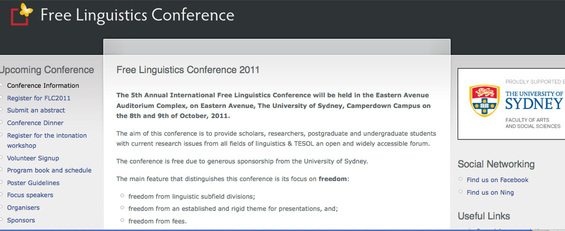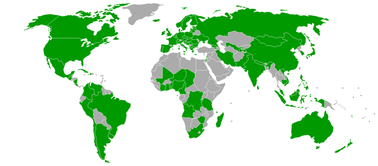
The week has been pretty much blogless because I've been out and about for conferences.
I spoke at the ACEL conference in Adelaide on Wednesday and
I spoke at the ACEL conference in Adelaide on Wednesday and

the Free Linguistics Conference in Sydney on Sunday.
Both talks were about how Apprenticeship Language Learning using Esperanto is a useful strategy for sustainable change, in giving children a first fluent foreign language, a broad and changeable intercultural perspective and the skills and motivation for other language success. The presentation at the Free Linguistics conference went on to give an insight into two of the first schools to have adopted the strategy using the "Talking to the Whole Wide World" resource, since it was published in April 2010. These are Sutherland Montessori in Sydney and Jakarta Montessori School. They are both using the resource as it was designed to be used- to teach the teachers and students together- and both are making good progress. They intend to start using their Esperanto to communicate with each other in early 2012, and perhaps with other schools, in other countries, later in the year.
One question from the ACEL group was about the distribution of Esperanto around the world- where is it most used?
Both talks were about how Apprenticeship Language Learning using Esperanto is a useful strategy for sustainable change, in giving children a first fluent foreign language, a broad and changeable intercultural perspective and the skills and motivation for other language success. The presentation at the Free Linguistics conference went on to give an insight into two of the first schools to have adopted the strategy using the "Talking to the Whole Wide World" resource, since it was published in April 2010. These are Sutherland Montessori in Sydney and Jakarta Montessori School. They are both using the resource as it was designed to be used- to teach the teachers and students together- and both are making good progress. They intend to start using their Esperanto to communicate with each other in early 2012, and perhaps with other schools, in other countries, later in the year.
One question from the ACEL group was about the distribution of Esperanto around the world- where is it most used?

I had already shown this map of countries with enough speakers to warrant a national Esperanto association (coloured green). As he supposed, the density of Esperanto speakers in the green countries varies. We see more Esperanto speakers in South Korea, Germany, Switzerland, Brazil , Vietnam and French-speaking African countries, places where there is more than one good contender for the role of second language.
Although Australia is certainly not yet among the countries most eagerly embracing Esperanto ( we don't yet eagerly embrace any other languages), we are in this same position where there is no really compelling case for any particular language to be the one for all of us, so we may join the hotspots list when we realize that bilingualism is both valuable and affordable!
If you have any questions, I'd be happy to answer comments :-)
Although Australia is certainly not yet among the countries most eagerly embracing Esperanto ( we don't yet eagerly embrace any other languages), we are in this same position where there is no really compelling case for any particular language to be the one for all of us, so we may join the hotspots list when we realize that bilingualism is both valuable and affordable!
If you have any questions, I'd be happy to answer comments :-)
 RSS Feed
RSS Feed